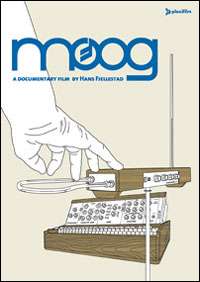
Halogen
The halogens or halogen elements (/ˈhælədʒən, ˈheɪ-, -loʊ-, -ˌdʒɛn/) are a group in the periodic table consisting of five chemically related elements: fluorine (F), chlorine (Cl), bromine (Br), iodine (I), and astatine (At). The artificially created element 117 (ununseptium) may also be a halogen. In the modern IUPAC nomenclature, this group is known as group 17.
The name 'halogen' means 'salt-producing'. When halogens react with metals they produce a wide range of salts, including calcium fluoride, sodium chloride (common salt), silver bromide and potassium iodide.
The group of halogens is the only periodic table group that contains elements in three of the four main states of matter at standard temperature and pressure. All of the halogens form acids when bonded to hydrogen. Most halogens are typically produced from minerals or salts. The middle halogens, that is chlorine, bromine and iodine, are often used as disinfectants. Organobromides are the most important class of flame retardants. Elemental halogens are lethally to dangerously toxic.
Halogen (band)
Halogen is a five-piece band from Perth, Western Australia. Formed in 1998 by two expatriate New Zealanders - Jasmine Yee and Frans Bisschops.
History
The band first gained national prominence in Australia through the song "Hole Around My Heart" from their Somewhere You're Alone recording. The song won the WAM Song of the Year in 2001. With the release of the single "Walkaway", and an accompanying tour of Australia's east coast (including a showcase performance at the Australian Music Week), the band furthered their claim for national attention. The single received rotational airplay on national broadcaster Triple J and a follow-up single, in the form of "On A Bridge", followed suit. Both singles found their way onto the band's debut album Save the Ones You Love. A third single from the album, "Caught Me", was subsequently released and also found rotational airplay.
Rather than take a traditional recording approach for their follow-up album Building On The Edge Of The Sky, songwriters Jasmine Yee and Frans Bisschops directed each composition to a different emerging producer. The result was a brilliant, if somewhat eclectic, recording taking Halogen away from the brooding guitars that previously typified their sound and into the realm of electronica.

Halogen (album)
Halogen is the thirteenth studio album by power electronics band Whitehouse, released in April 1994 through their Susan Lawly label. The album's cover was made by artist Trevor Brown, who previously collaborated with the band with their 1991 album Twice Is Not Enough.
Track listing
All songs written and composed by W. Bennett, except where noted.
Personnel
References
Moog
Moog may refer to:
- Robert Moog, inventor of the Moog synthesizer
- Moog synthesizer, sound-generating electronics invented by Robert Moog
- Moog (film), a 2004 biographical film about Robert Moog
- Moog Music, a synthesizer maker founded by Robert Moog
- Willy Moog, philosopher
- Moog synthesizer, sound-generating electronics invented by Robert Moog
- Moog (film), a 2004 biographical film about Robert Moog
- Moog Music, a synthesizer maker founded by Robert Moog

Moog (film)
Moog is a 2004 documentary film by Hans Fjellestad about electronic instrument pioneer Dr. Robert Moog. The film features scenes of Dr. Moog interacting with various musical artists who view Moog as an influential figure in the history of electronic music.
Moog is not a comprehensive history of electronic music nor does it serve as a chronological history of the development of the Moog synthesizer. There is no narration, rather the scenes feature candid conversation and interviews that serve more as a tribute to Moog than a documentary.
The film was shot on location in Hollywood, New York, Tokyo, and Asheville, North Carolina where Moog's company is based. Additional concert performances were filmed in London and San Francisco.
The film's 2004 release was designed to coincide with the fiftieth anniversary of Moog Music, Robert Moog's company that was founded as R.A. Moog Co. in 1954.
Artists who appeared in the film
Moog (code)
MOOG is an astronomical software package. It is an example of Fortran code that performs a variety of spectral line analysis and spectrum synthesis tasks under the assumption of local thermodynamic equilibrium. Moog uses a model photosphere together with a list of atomic or molecular transitions to generate an emergent spectrum by solving the equation of radiative transfer.
The typical use of MOOG is to assist in the determination of the chemical composition of a star, e.g. Sneden (1973). This paper contains also the description of the first version of the code and has been cited about 240 times as of 2008-04-24 by publications in international journals studying the abundances of chemical elements in stars.
The software package has been developed and is maintained by Christopher Sneden, University of Texas at Austin. The current supported version of the code was released in August 2010 and is described in the MOOG User's Guide (see references below). Moog is written in FORTRAN 77.
Podcasts:

